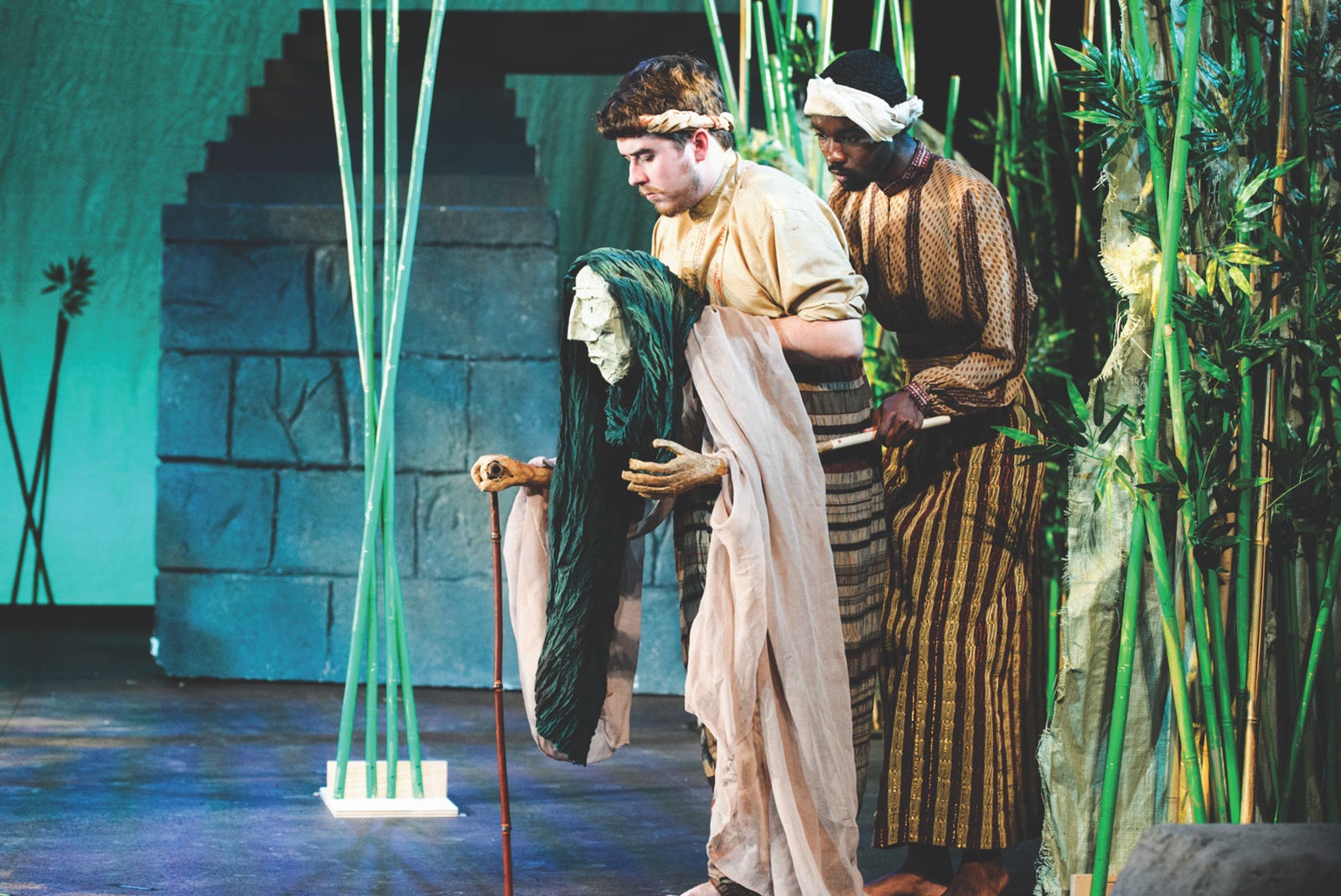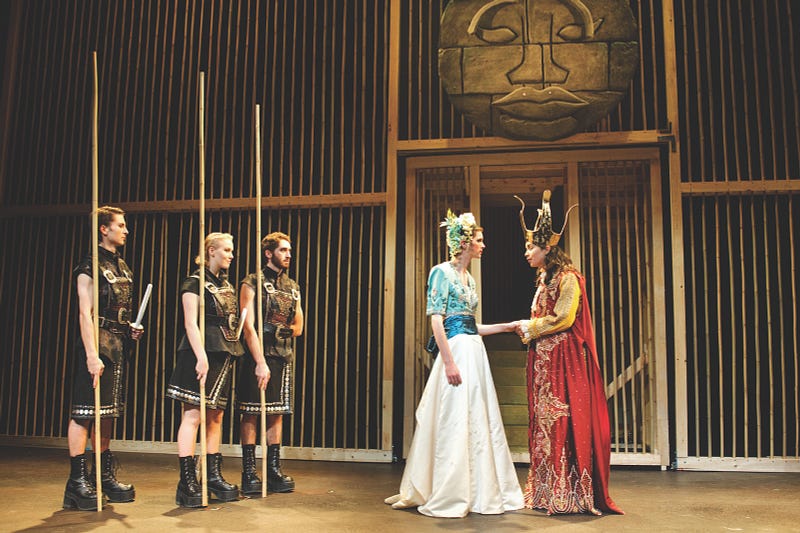
I had no clue what to expect as I settled into my seat in the Kennedy Center’s Romano Theater, five minutes before the show was about to start. The previous shows I’d attended on campus had all been ones I was pretty familiar with, but
King Stag
was a mystery I hadn’t had time to Wikipedia beforehand. So, as the lights went down, leaving me in the dark — both physically and metaphorically — you can imagine my surprise when the first two student actors walked onto the stage and I realized the whole play was gender swapped.
The magical surrealist comedy
King Stag
was originally written in the 18th century by Italian playwright Carlo Gozzi, with its hook being the fact that all the male characters were played by women and all the female characters were played by men. With my interest piqued, I sat back and continued watching.
King Stag
is set in the mythical kingdom of Serendippo and follows an ensemble cast though their experiences with love, jealousy, and betrayal. The play begins with the premise that King Deramo (Emily Aviles ’19) is looking for a wife. He prefers to interview each applicant for the position, but has gone through thousands of noble women, rejecting each of them. He sends out a notice saying that his search has now been extended to women of all statuses, prompting his First and Second Ministers Tartaglia (Noelani Stevenson ’19) and Pantalone (Ashley Huntington ’20) to begin prompting their own daughters to be interviewed. Tartaglia’s daughter Clarissa (Jake Bolster ’20) is in love with another man, while Pantalone’s daughter Angela (Robbie Lane ’20) is in love with the King, but is scared by his high standards and the possibility of being publicly rejected. Meanwhile, the King’s valet Brighella (Taylor Wallace ’19) begins training his comically ambitious and social-climbing sister Smeraldina (Jack Clark ’21) to ace the interview as well. King Deramo chooses Angela as his wife, sending Tartaglia into a rage, as he wanted his daughter on the throne and Angela for himself. He then plots to defeat King Deramo by using a spell that will switch Deramo’s soul in the body of a stag, and his own soul into the body of Deramo in order to imitate him, and rule as king with Angela by his side. The drama continues to unfold, laced with interesting subplots and impeccable comedic timing, and ends with King Deramo back in his own body married to Angela, and Tartaglia being cursed and shunned for his actions.

I, personally, have never been disappointed by a Hamilton theater production, and
King Stag
was no exception. Each actor gave their character just the right amount of dramatization and comedic energy in order to keep the audience hooked and laughing through the whole performance. There were a lot of references to Hamiltonian language and themes that the cast managed to pepper into the script to keep the show relatable and unique, which I thought was very enjoyable. The advanced nature of the set design added to the show’s “wow-factor,” as actors dressed in dazzling and outrageous outfits were raised above the audience’s heads on elaborate structures, and lowered below the stage on complex contraptions. It was great to see a performance where the set-tech crew really had a chance to shine, and gave the actors even more elements to play off of. Overall, the ability displayed by the Hamilton Theater Department’s cast and crew to put on a phenomenal show was highlighted during their performance of
King Stag
, and I’m excited to see what they continue to do during their time on campus.
While I have nothing but good things to say about the actual performance, there are a few issues I felt the need to address in writing this review.
King Stag
is an Italian play that has been adapted by many modern American playwrights, and has even been translated into Russian for a movie version of the story, released in 1969. One thing I was surprised to see when watching the Hamilton interpretation of the play was that the set was heavily influenced by different aspects of a collection of both South- and East-Asian cultures. The aspects that influenced the set, costume design, and music composition were not specific to one country. These devices were, rather, a mishmash of traits used in order to — what seemed to me as an audience member — root the mythical kingdom of Serendippo in some ambiguously Asian setting.
Considering that the cast of actors was majority white, I found it odd that the Department decided to take the creative liberty of borrowing aspects of starkly different East- and South-Asian cultures for its set when
King Stag
is an originally European play. The use of Asian culture for aesthetic rather than plot poses an issue. The setting of Serendippo has nothing to do with the story’s plot development, and the inclusion of Asian elements for no explicit purpose was, as an audience member, confusing.
I am not writing this to invalidate the performances given and hard work and talent displayed by the Hamilton students who participated in the production. I stand by my statement that it was, as a whole, an amazing performance.

























